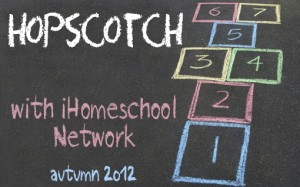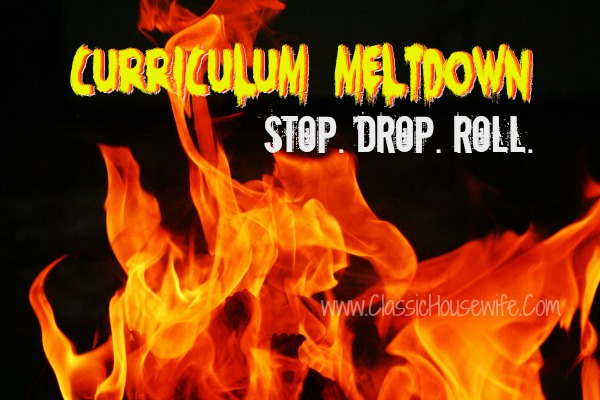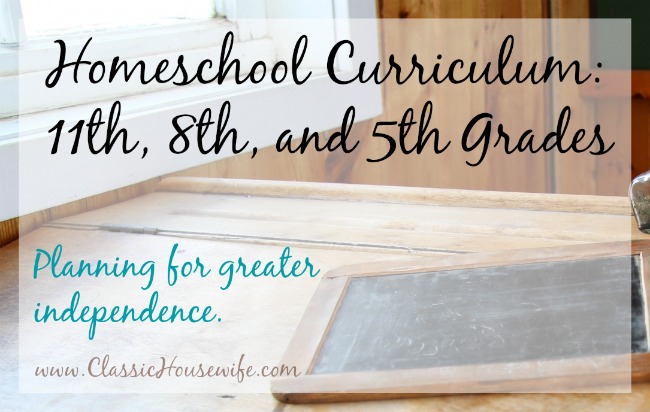
Teaching With Basal Readers
Basal readers (or primers) are short “textbooks” with an organized series of illustrated short stories used to teach a set of phonemes or sight words. You can find basal readers for both the phonics approach and the sight word approach. The most well known phonics-based reader is the McGuffey Reader series, which dates back to the 1860’s and is still widely used today. The most famous sight word reader is the Dick & Jane series which was used greatly from the 1930’s to the 1970’s and then fell in popularity after the sight word (or “look say”) approach came under attack. Of course, if you’re an “eclectic mixer” like me who likes to combine approaches… you’ll use both. =)
Teaching With McGuffey Readers
As a teacher who likes to place more emphasis on phonics, our McGuffey readers are well used and my main source of reading text for littles. The McGuffey Readers have been updated with several editions over the years but the format and material is largely the same. Also, the McGuffey readers come in 7 different leveled readers, though it’s important to note that these are not grade levels but levels of increasing difficulty.
You’ll also notice as soon as you look inside of one that they look obviously Old Fashioned and that they use the phonetic marks (symbols?) to indicate the sounds. If you’re not familiar with them – that’s okay! Don’t let this scare you off. They’re pretty easy to figure out and also, there is a McGuffey Tutor youtube channel and a website, McGuffey’s Online Tutor. These are great resources to help you figure out how to get started! I think the later editions don’t have the phonetic alphabet symbols but I actually quite like them. I like being able to teach the kids that the new phoneme we are working on looks like “this” and every time we see that on the page it’s going to make “this sound.” It helps them identify new sounds visually and is a big help.
I will have the kids read a new lesson to me several times (days) before moving on so they become comfortable and fluent with each step as we go. My rule of thumb is that if they can read all the way through easily and confidently (even if only their 2nd time) we move on. If they can’t, we wait. This keeps them from spending too much time on material that isn’t challenging enough or moving on before they are ready. Using the McGuffey Readers as a part of our phonics instruction solidifies the usage and construction of words with the building blocks we have been learning.
One more cool thing, you can buy the McGuffey readers in hardback, or if you’re the print and bind kind of person, you can print them free online. I’ve linked to each of them previously and you can find them here.
Using Dick & Jane Readers
Dick and Jane readers are basal readers that are based on the sight method, and so, have a lot of high frequency words and sight words that aren’t phonetic. I find that adding these to our reading curriculum helps the kids build confidence with recognizing words, especially those tricky ones. One short lesson will repeat a handful of words over and over, so by the end of the reading, a child who was sounding out new words at the beginning of the text is recognizing by sight at the end. Consecutive lessons continue to use and build upon the already learned words so they are not forgotten.
Back when Princess was about five years old, my mom gave us a Dick and Jane Treasury collection. That book has been used with all three of my kids and is starting to fall apart! The kids liked the simple pictures and the characters. They do try to guess what is going on based on the pictures, but they still have to read each word at a time correctly. Guessing what is going to happen based on the pictures or the sentence that was just read is actually a good sign of understanding context clues and drawing conclusions. We just have to teach our kids not to get ahead of themselves and to read through the sentence to practice good reading habits.
While reading through the Dick & Jane reader, I would remind the kids of the phonics rules we had learned. There are many, though they are really more like guidelines than rules. I would remind them that one vowel between two consonants is going to say it’s short sound, or that this new “oo” makes the same sound as in “book.” Doing this prevents the kids from relying too heavily on sight memory, and helps them practice decoding words with their phonics skills.
Progressing to Leveled Readers
You know those grade-leveled readers you can find at the bookstore? You know, like the I Can Read series or the Scholastic Leveled Readers. Yeah, those. I have a love/hate relationship with those. Why? Well, because they can be inconsistent. Sometimes the reading level is too easy or too hard. Sometimes they use too many irregular words. So for that reason, we don’t use very many of the preschool and kindergarten level books. I like to help the kids build a good foundation and work through the basal readers first.
However, once they have a good grasp on reading and are ready to move on from the basal readers… I LOVE THEM. I love the leveled readers because they come available in so many topics that you can easily find books that will interest your child and draw their interest. We have had leveled readers on princesses, Barbie, Gigi, mermaids, dolphins and other animals, cars, Berenstein Bears, Frog and Toad, and so much more. They don’t last very long though so we like to buy some but rent most of them from the library. =)
“To Infinity and Beyond…”
Once your child has a grasp on reading and an interest for it, they sky is the limit! After leveled readers we move to short story books and short chapter books and then bigger chapter books. As they grow and read more, their vocabulary and comprehension grows and then they can read even more. Some kids enjoy reading more than others do but for most kids, they will enjoy reading as long as you can help them find books that will interest them.
The Scholastic Book Wizard can help you find the grade reading level of certain books and I like this list of recommended chapter books over at Women Living Well for a good place to start.
Further reading: Online audio/visual phonics rules lessons at ABC Fast Phonics, Top 10 Phonics Rules,
Just joining in? Start at the beginning. (It’s a very good place to start.)
Are you familiar with basal readers? Do you have any advice? Or if not and you have questions, leave them in the comments below.
This series is a part of a blog hop called “The Hopscotch” through iHomeschool Network (previously known as “the ten days of” series.) HOP on over and hopscotch through all the other 10 Days series. While you’re there, check out the Pin it to Win It contest featuring a giveaway of products from Prufrock Press.
If you’d like to read more posts related to reading, then you may want to check out Marianne’s Homeschooling with Dyslexia, Mary’s 10 Days of Reading Aloud, or Becky’s Teaching Spelling Through Word Study!
Image Source: Young Reader by Francisco Farias Jr



